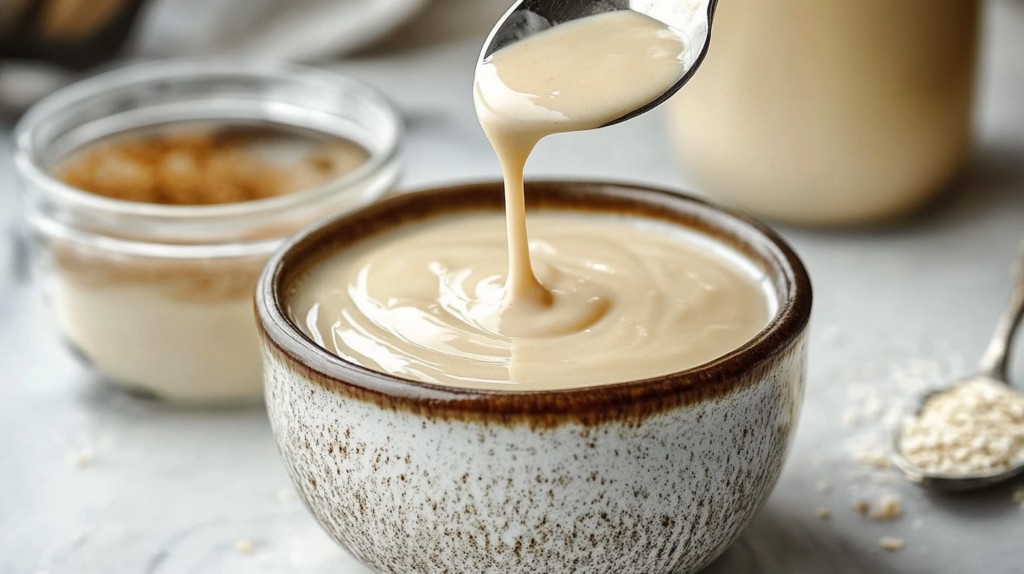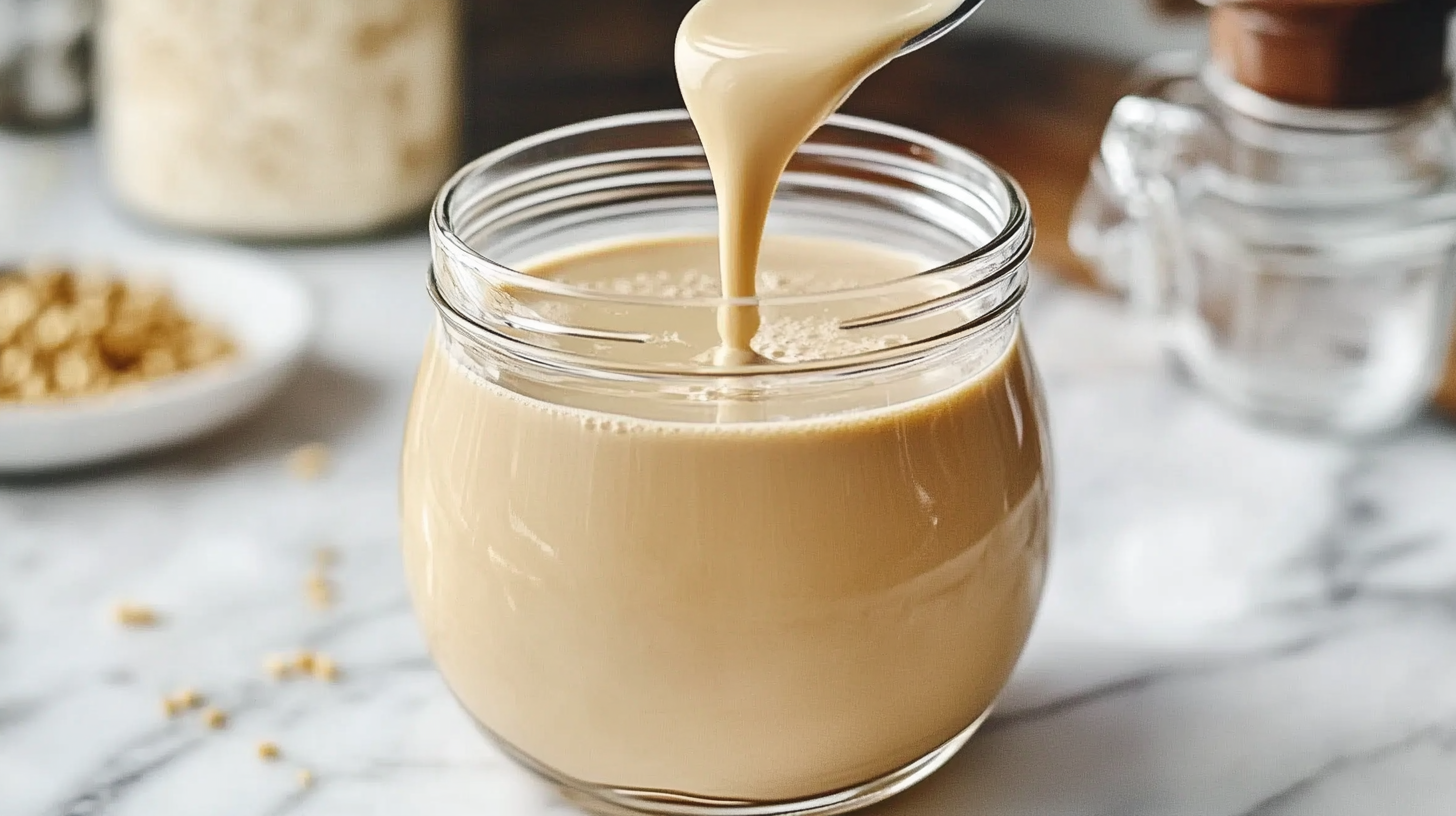Tahini, a creamy paste made from ground sesame seeds, is celebrated worldwide for its unique, nutty flavor and versatility. Originating in the Middle East, tahini has found a home in kitchens across the globe, thanks to its distinct taste and numerous health benefits. It’s commonly used in popular dishes like hummus and dressings, but tahini also shines in baked goods and as a standalone ingredient.
In this article, we’ll dive into what makes tahini so special, exploring its nutritional profile, various types, and tips for making it at home. We’ll also cover different ways to incorporate tahini into your meals, and answer frequently asked questions to help you master this powerful ingredient.
What is Tahini?
Origins and Cultural Significance
Tahini traces its roots back thousands of years to ancient Middle Eastern cultures. Originally prized for its rich flavor and nutrient density, tahini has remained a staple in traditional recipes. In the Middle East and North Africa, tahini is often featured in savory dips, sauces, and sweets, making it both culturally and culinarily significant.
How Tahini is Made
Tahini is typically made by grinding toasted sesame seeds into a smooth, rich paste. The process involves:
- Selecting Quality Sesame Seeds: White sesame seeds are often preferred for their mild flavor, though darker seeds can produce a stronger taste.
- Roasting the Seeds: Lightly roasting the seeds enhances the nutty flavor, though raw tahini is also available and offers a slightly milder taste.
- Grinding into Paste: The roasted seeds are ground to a creamy consistency, often without adding oil, as the seeds release their own natural oils during the process.
By understanding these basics, you’ll appreciate how the quality of tahini can vary and know what to look for when purchasing it. In the next section, we’ll examine the impressive nutritional benefits of tahini, highlighting why it’s a favorite among health-conscious eaters.
Nutritional Benefits of Tahini – Why It’s Good for You
Tahini isn’t just tasty; it’s also loaded with nutrients that make it a valuable addition to your diet. Here’s a breakdown of the main health benefits you can enjoy with every spoonful of tahini.
Rich in Essential Vitamins and Minerals
Tahini is packed with vital nutrients that support various body functions:
- Protein and Fiber: Tahini is an excellent source of plant-based protein and fiber, supporting muscle health and aiding digestion.
- Healthy Fats: Sesame seeds are rich in monounsaturated and polyunsaturated fats, beneficial for heart health.
- Calcium, Iron, and Magnesium: These minerals contribute to bone strength, oxygen transport, and energy production.
High in Antioxidants
Tahini contains sesamin and sesamol, two antioxidants that help protect cells from oxidative damage. Antioxidants play a key role in reducing inflammation and may lower the risk of chronic diseases.
Supports Heart Health
Thanks to its healthy fat profile, tahini can be part of a heart-friendly diet. Studies suggest that monounsaturated and polyunsaturated fats can improve cholesterol levels, helping to reduce the risk of heart disease.
Contains Plant-Based Compounds for Bone Health
Tahini’s calcium content, along with magnesium and zinc, supports bone density, making it a great addition to diets focused on bone health. This is especially beneficial for individuals looking to maintain strong bones as they age.
By incorporating tahini into your meals, you can boost your nutrient intake while enjoying its unique flavor. Now, let’s look at the different types of tahini available and how each brings a unique taste to the table.
Types of Tahini and Their Flavors
Tahini comes in various forms, each with its unique flavor profile, depending on the type of sesame seeds and preparation methods used.
Hulled Tahini vs. Unhulled Tahini
- Hulled Tahini: Made from sesame seeds with the hull (outer shell) removed, hulled tahini has a milder flavor and a lighter color. It’s often preferred for its smooth texture and less bitter taste.
- Unhulled Tahini: Using whole sesame seeds, unhulled tahini has a richer flavor and is slightly darker. It also contains more fiber and nutrients from the hull, making it a more nutrient-dense option.
Raw Tahini vs. Roasted Tahini
- Raw Tahini: Made from raw sesame seeds, this type has a milder flavor and is ideal for those who prefer a more subtle taste.
- Roasted Tahini: Roasting the seeds before grinding creates a bolder, nuttier flavor. This type of tahini is popular in savory dishes, like sauces and dressings.
Knowing the differences between these types helps you choose the best tahini for your recipes. In the following section, we’ll explore some delicious ways to use tahini in your cooking.
Culinary Uses of Tahini – Elevate Your Dishes

Tahini is incredibly versatile, lending its nutty, creamy flavor to various dishes. Here are some popular ways to incorporate tahini into your meals:
Classic Uses of Tahini
- Hummus: Tahini is a key ingredient in hummus, adding a creamy texture and subtle nuttiness to this beloved Middle Eastern dip.
- Tahini Sauce: Mix tahini with lemon juice, garlic, and water for a simple sauce perfect for drizzling over salads, roasted vegetables, and falafel.
- Baba Ganoush: This roasted eggplant dip features tahini, olive oil, and lemon, creating a creamy, smoky appetizer.
Creative Tahini Recipes
- Tahini Salad Dressing: Combine tahini with vinegar, honey, and herbs for a dressing that brings depth to greens and grain salads.
- Tahini Cookies: Tahini adds a unique richness to cookies, blending well with flavors like chocolate and nuts.
- Smoothies: A spoonful of tahini adds creaminess and a hint of nuttiness to smoothies, pairing well with ingredients like bananas, dates, and cacao.
Sweet Treats with Tahini
- Tahini Brownies: Incorporating tahini into brownie batter gives a nutty flavor and rich, fudgy texture.
- Halva: A Middle Eastern dessert made from tahini and sugar, halva is a sweet, dense treat with a slightly crumbly texture.
- Tahini Banana Bread: Substitute some oil with tahini in banana bread for added moisture and a unique flavor twist.
These recipes demonstrate how tahini can enhance both savory and sweet dishes, making it a valuable ingredient in any kitchen. Next, let’s explore how you can make tahini at home for maximum freshness and flavor.
How to Make Tahini at Home – A Step-by-Step Guide
Making tahini at home is simple and allows you to control the quality and flavor. Here’s a step-by-step guide to making tahini from scratch.
Ingredients You’ll Need
- Sesame Seeds: White sesame seeds are ideal, but you can use black sesame seeds for a unique taste.
- Neutral Oil (Optional): A small amount of oil, like grapeseed or olive oil, can help achieve a smoother consistency.
Instructions
- Toast the Seeds: Lightly toast the sesame seeds in a dry skillet over medium heat until they’re golden brown. This enhances their flavor.
- Cool the Seeds: Allow the seeds to cool to room temperature to prevent overheating during blending.
- Blend: Place the sesame seeds in a food processor and blend until a paste forms. Add a small amount of oil if needed for a smoother texture.
- Store: Transfer the tahini to an airtight container and store in the refrigerator.
By following these steps, you can enjoy homemade tahini that’s fresh and full of flavor. In the next section, we’ll discuss storage tips to keep your tahini at its best.
Storing and Preserving Tahini
Proper storage ensures that your tahini stays fresh and flavorful. Here are some tips for storing tahini:
- Refrigeration: Store tahini in the refrigerator to maintain its freshness and prevent separation. Homemade tahini can last up to a month in the fridge, while store-bought varieties often last longer.
- Separation: Tahini may separate over time, with the oil rising to the top. Simply stir it before each use to restore its consistency.
- Avoid Contamination: Use a clean spoon each time to prevent introducing moisture or bacteria, which can spoil the tahini.
With proper storage, you’ll always have fresh tahini on hand, ready to enhance your favorite dishes.
Frequently Asked Questions about Tahini
Is Tahini Gluten-Free?
Yes, tahini is naturally gluten-free as it’s made from sesame seeds.
Can I Use Tahini in Baking?
Absolutely! Tahini works well in baked goods like cookies, brownies, and cakes, adding a nutty depth and moisture.
What Does Tahini Taste Like?
Tahini has a rich, nutty flavor, similar to peanut butter but slightly more bitter.
Does Tahini Need to Be Refrigerated?
While it can be stored at room temperature, refrigeration helps extend its shelf life.
Tahini’s Role in Global Cuisine
While tahini is central to Middle Eastern cuisine, it’s also enjoyed globally in various adaptations.
Middle Eastern Cuisine
In the Middle East, tahini is a core ingredient in traditional dishes like hummus, baba ganoush, and halvah, showcasing its versatility in both savory and sweet forms.
Asian and Western Fusion
Tahini has gained popularity in Western dishes, often used in place of nut butters or as an ingredient in fusion recipes. It’s commonly added to smoothies, dressings, and even pasta sauces for added creaminess.
By understanding tahini’s global reach, you can appreciate its versatility and why it’s become a kitchen staple worldwide.
Final Thoughts on Tahini – A Nutritional and Culinary Powerhouse
Tahini is more than just a spread or condiment; it’s a nutrient-dense ingredient that can elevate countless recipes. Its rich, nutty flavor and creamy texture make it suitable for dishes ranging from savory sauces to decadent desserts. Whether you’re making hummus, trying a new twist on brownies, or preparing a homemade tahini dressing, this sesame paste is a versatile addition to any recipe.
With its growing popularity, tahini has earned a well-deserved place in kitchens worldwide, appreciated not only for its taste but also for its health benefits. So next time you’re looking to enhance a dish, reach for tahini and enjoy the depth it brings to your cooking.

